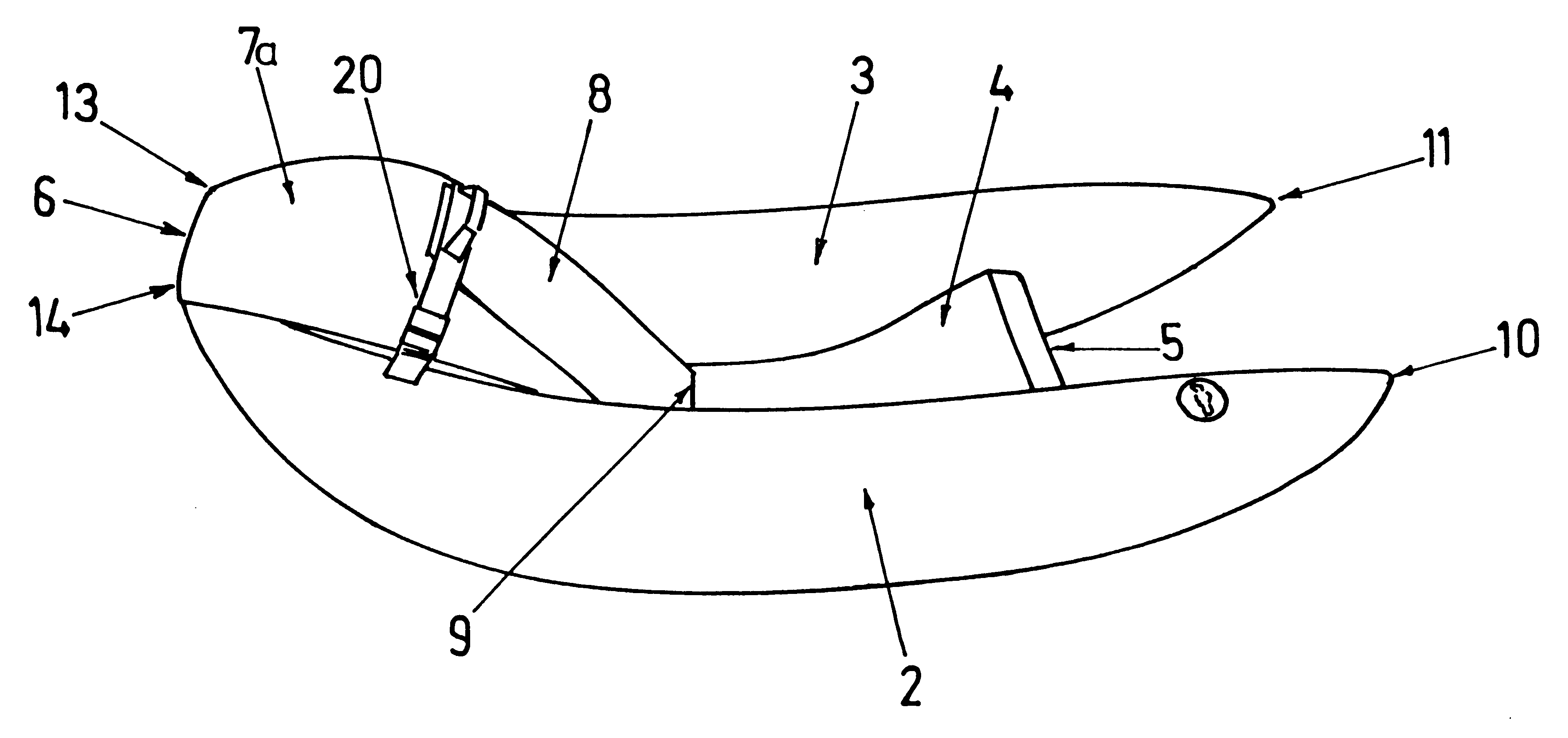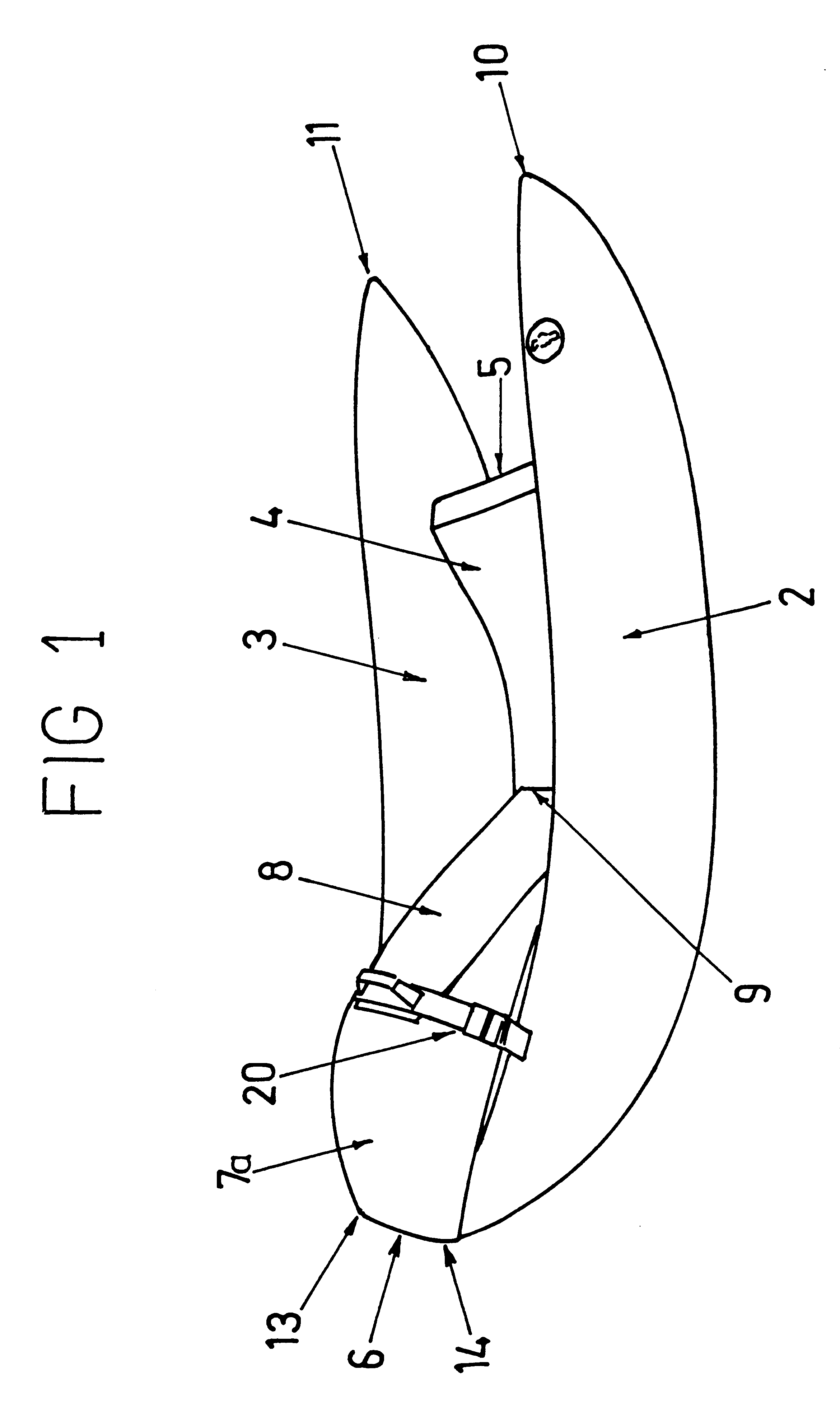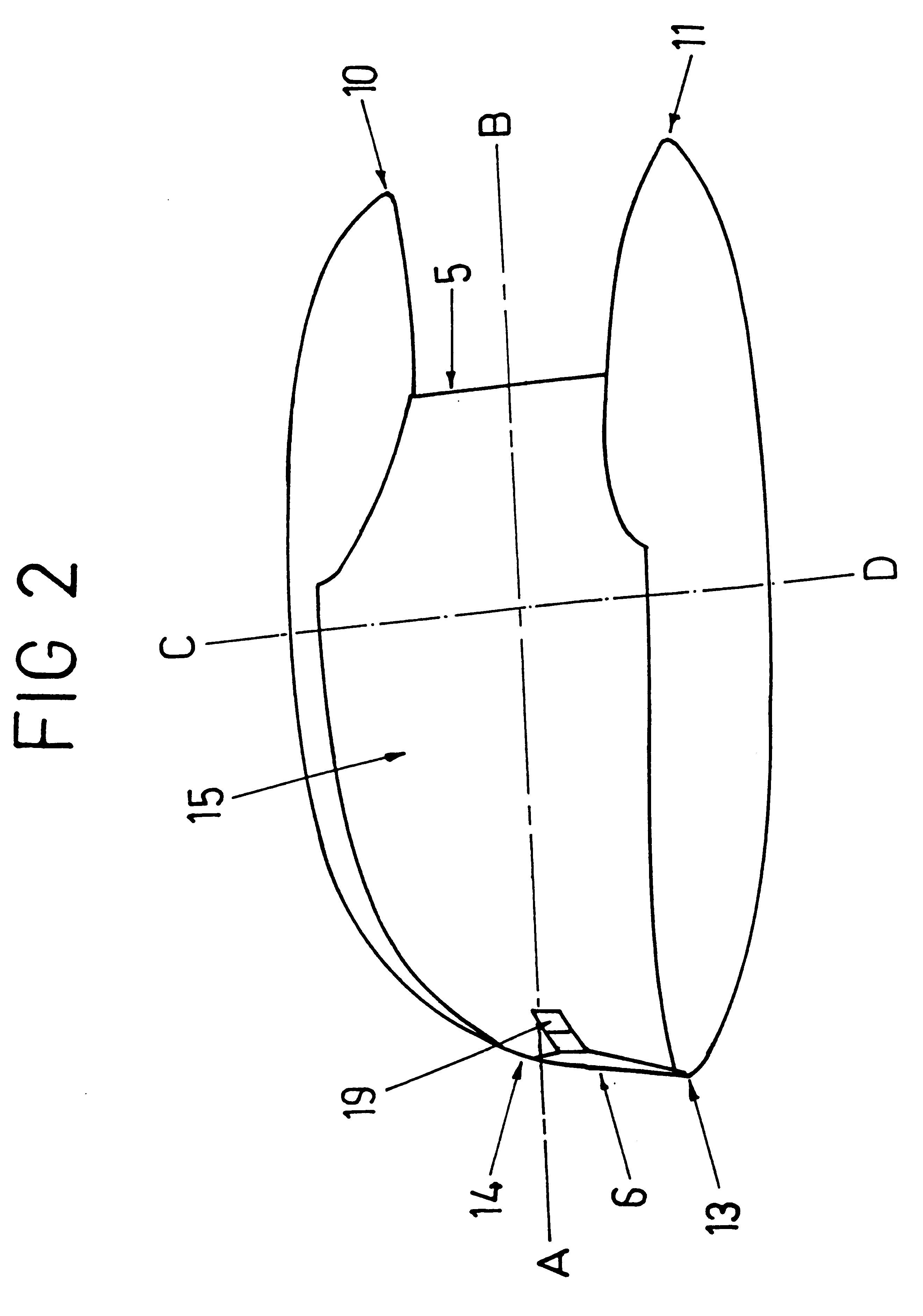Flotation device
a technology of a floating device and a flange is applied in the field of floating devices, which can solve the problems of inability to use hands, inability to manoeuvrability, and inability to use feet/legs for manoeuvring and propulsion, and achieve the effect of efficient human propulsion and minimising the risk of snagging the lower surfa
- Summary
- Abstract
- Description
- Claims
- Application Information
AI Technical Summary
Benefits of technology
Problems solved by technology
Method used
Image
Examples
first embodiment
Referring to drawings 1-5, the U-shaped chair is comprised of two inflatable floats (2 & 3), a semi-rigid seat base (4), an adjustable seat-back (8), a bow hull floor section (12), a hull skin section (15a), an inflatable buoyancy bag (16) and a waterproof covering (7).
The two inflatable floats (2 & 3) are circular in cross-section and taper at both ends to conical points (10 & 11) at the tern and (13 & 14) at the bow. The longitudinal axes of the inflatable tubes (2 & 3) are orientated to converge towards the bow (6), (although they do not meet in this preferred embodiment) and are substantially parallel towards the stern.
The hull skin section (15a) is permanently fixed (e.g. stitched, glued or, heat-welded) to the floats (2 & 3). As shown in FIG. 4 the seat-base (4) and the bow hull floor section (12) are hinged together (to enable them to be dismantled and compactly folded) and are secured (e.g. zip, clips) to the aft-edge (5) of the hull skin section (15a) and pushed between (an...
fourth embodiment
In the preferred form of the fourth embodiment, the seat-back (8) is also integrally moulded with the floats / central section assembly (2a, 3a, 15) and is comprised of a near-rectangular section contoured to the shape of a user's back and upwardly inclined towards the bow from the intersection (9) with the seat-base (4).
In a fifth embodiment, shown in FIG. 3., the seat-back (8) may be formed as a distinct, adjustable, semi-rigid foam seat-back, which is zipped to the intersection (9) (as disclosed in the first preferred embodiment ). The volume between the seat back (8) and the bow-hull floor section (12) is filled by the removable, inflatable buoyancy bag (16) and / or cargo. In this embodiment, the use of inflatable buoyancy bag (16) and the possible adjustments to the seat-back (8) (including adjusting straps (20, 21) and all other related paraphernalia) correspond directly to the aforesaid description in the first embodiment
It has been found in practice that a reduced buoyancy embo...
sixth embodiment
The above comments assume the use of webbed gloves by the user, without which hand rolling would be far more difficult. The reduced cross-sectional area (and consequently a reduced width) of the floats (2,3) (as shown in FIG. 8) of a low buoyancy non-inflatable embodiment would produce a substantially parallel sided U-shaped hull (in plan view) from the stern to the region adjacent the user's chest / shoulders. FIG. 8 shows a plan view of the first preferred embodiment with the periphery of the low buoyancy sixth embodiment denoted by a dotted line (30). Provided the bow hull floor section (12) still maintained a hydrodynamically efficient side profile, a substantially straight, blunt-ended parallel-sided U-shape (as shown in FIG. 9) would be possible. However, the requirement would still exist for the user to be able to immerse (for paddling) their hand / slower arms whilst reclining on the seat back (8).
Any of the above embodiments (particularly the low buoyancy embodiment) may be use...
PUM
 Login to View More
Login to View More Abstract
Description
Claims
Application Information
 Login to View More
Login to View More - R&D
- Intellectual Property
- Life Sciences
- Materials
- Tech Scout
- Unparalleled Data Quality
- Higher Quality Content
- 60% Fewer Hallucinations
Browse by: Latest US Patents, China's latest patents, Technical Efficacy Thesaurus, Application Domain, Technology Topic, Popular Technical Reports.
© 2025 PatSnap. All rights reserved.Legal|Privacy policy|Modern Slavery Act Transparency Statement|Sitemap|About US| Contact US: help@patsnap.com



